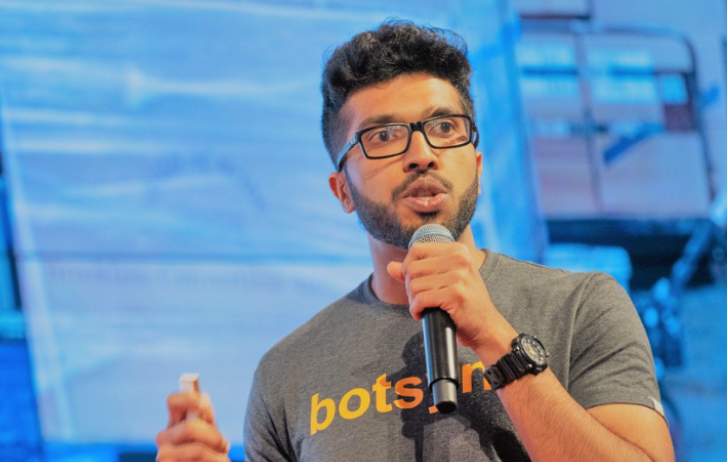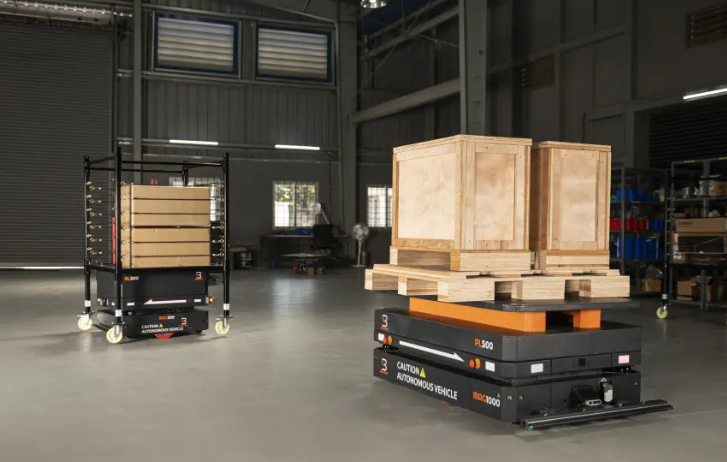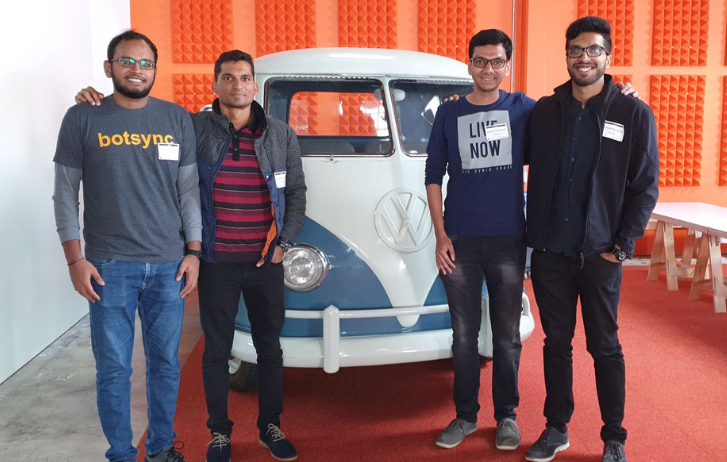
Are Autonomous Robots Powering Asia’s Production Economy? Botsync’s CEO On Mass Automation
By FedEx | April 16, 2025
Founded by four university students, Botsync is a robotics start-up with a strong presence in India and Southeast Asia, and an eye on global expansion. CEO and co-founder Rahul Nambiar breaks down why robots are key to driving efficiency in supply chains.
- Botsync is a Singaporean robotics start-up founded by four university students in 2019.
- Specializing in building autonomous mobile robots for factories and warehouses, Botsync has expanded across Asia, combining robotics technology with industrial automation.
- In our latest instalment of Confessions of a CEO, co-founder and CEO Rahul Nambiar breaks down the journey from student start-up to Series A funding.
Robots are the driving force behind many of today’s manufacturing and automation processes. From hospital operating theaters to warehouses and factory floors, autonomous robots are streamlining production, logistics, precision engineering and more.
Botsync was founded by four roboticists at Nanyang Technological University in 2017. The company has since progressed through several milestones, including opening its first software development center in 2019, securing multiple rounds of funding, and expanding beyond Asia to markets like South Africa and Australia.
Most recently, it was featured in the FedEx-sponsored Forbes Asia 100 To Watch list, which spotlights notable companies on the rise across Asia Pacific.
Building a robotics company from the ground up
Offering an industry-first no-code automation control platform and a fleet of autonomous robots, Botsync is using cutting-edge technology to transform enterprise supply chains. Key industries served include FMCG (fast-moving consumer goods), food and beverage, distribution centers, and automotive and heavy machinery.
The company recognizes that every facility has unique challenges and constraints. While the autonomous robot fleet reduces manual operations, Botsync’s no-code software platform integrates automation systems quickly, reducing the need for specialists and eliminating production downtime.
A tech entrepreneur passionate about robotic automation, co-founder and CEO Rahul Nambiar is out to make industrial automation accessible and efficient for enterprises with complex supply chains.
We spoke to Rahul about the future of robotics, and his mission to see people and machines work in harmony.
The start of every new entrepreneur’s journey can be a tough hustle. What was it like when you first launched Botsync with your co-founders?
Rahul Nambiar: Building a robotics company is like building many companies at once. You need mechanical, electrical and software systems to all come together effectively for the product to work. Then you need to manage sales, supply chain, finance and operations to deliver your product to customers. This made the early days a challenging yet exciting period for us.
As founders, we were involved in everything from designing the robots to tightening bolts, soldering wires, and making payments and bookkeeping. This was definitely not a scalable structure, but it helped us considerably when we had to start designing processes for the company as we grew.
Our first big break was with an automotive customer in Thailand. This was to be their first deployment of an autonomous mobile robot system outside of Europe and North America, and we came up with a solution to meet their requirements. However, we had some issues at the site, so we decided to visit the factory to ensure that the customer would continue to use and expand our systems.
A one-week trip turned into two months of all-nighters and 7/11 microwave meal dinners. Stressful and frustrating days, but navigating difficult situations together brought us much closer together as a team.
We managed to achieve a YoY sales growth of over 150% in 2024, primarily fueled by existing customer expansion to new geographies.
You struggled to raise funds at the start, but have since raised USD 8.5M in investment. Any tips on balancing finances for aspiring entrepreneurs?
When we started operating, we weren’t familiar with the venture capital space beyond the limited materials we had come across online. The only metric we were concerned about was generating cash from the business as quickly as we could to survive.
To do this, we had to solve problems that customers would be willing to pay for, and spend most of our time at customer facilities to build the product. We focused our efforts on customers willing and able to pay as we scaled our pilots with them.
We had to maintain a high degree of discipline in investing the limited capital we had. This meant keeping the operations lean, only hiring team members for critical functions as revenues kept growing.
A lean, responsible approach to financial planning is a core part of our company culture today. It’s allowed us to scale to a similar revenue size as our counterparts in other geographies, but with far less capital consumption.
When you launched Botsync, how did you find your first customers?
To get the first few opportunities with our target customers, we collaborated with partners who sold complementary products to the same target customer base.
The type of customers we work with tend to be large enterprises, where multiple teams are involved in the decision-making process. It took time to identify the right people to approach in these organizations.
Once we identified the right profiles and understood their primary motivations for deploying robotic solutions, we could leverage LinkedIn and cold calls to make the most out of lead generation campaigns.
How much has Botsync grown since launching in 2019?
We have deployed our robots at over 25 customer sites. The number of active production runs onsite increased to 250,000 in 2024 from under 50,000 in 2022. In 2025, we expect this to increase to over 1 million production trips, with the number of sites using Botsync products doubling to over 50.
We’ve revolutionized operations for industry leaders like Ford, Coca-Cola, and Kimberly-Clark, allowing them to boost throughput, reduce downtime, and improve efficiency in record time. So far, we’ve helped our enterprise customers decrease their operating costs by as much as 30% on average, achieving ROIs on their investments within 24 months.
We managed to achieve a YoY sales growth of over 150% in 2024, primarily fueled by existing customer expansion to new geographies.
What are your 2025 trend predictions for warehousing and logistics in the automation industry?
1. Interoperability between different robotic systems
There is a greater push for interoperability between different robotic systems through common frameworks such as VDA 5050 for autonomous mobile robots, or Open Platform Communications for Programmable Logic Controller communications. This is something we’re also trying to push for with our SyncOS platform, allowing customers to program workflows between different robotic systems with our no-code workflow builder.
2. AI for advanced task optimization and analytics
Optimizing and analyzing performance of our robots is still a very manual process, driven by rigid rules and spreadsheet analytics. With the latest developments, we believe this can be optimized much further. We have some cool user features planned that we are very excited for.
What’s next for you and your co-founders?
There are two major areas of growth we’re focused on:
1. Customer expansion
We had great feedback from our first few users. We’re now working with them to expand the scope of implementations, and replicate solutions in their other locations across the world. Building on our presence in India, Southeast Asia and Australia, we’re about to expand to the Americas and Japan, supporting our customers in their expansion journeys while finding new users.
2. Leveraging software to deliver significant value
We are investing heavily in our software capabilities. As well as making our platforms extremely simple to use, we want to enhance the efficiencies we can generate for our users – in a way most robotic companies can’t. This is the future of the industry.
What’s one belief that other business leaders might disagree with you on?
We were repeatedly told to adopt a ‘hire fast, fire faster’ approach to recruitment. While I appreciate that might be a viable strategy for some companies, it wasn’t the culture we wanted to build for ourselves.
Instead, we focused on being very selective about who we hire, nurturing and pushing the team to grow into larger responsibilities. If things don’t work out, we still take the tough calls, but it’s not our first thought when building the team.
Finally, what’s the greatest business failure you treasure most?
In the very early stages of our business, we split our team into two locations, Singapore and Bangalore. This was done to minimize expenses and extend our runway as we built the product.
Being naïve first-time founders, we prioritized cost control. However, for a start-up, execution pace is more critical for survival than saving 10% to 20% of your operations.
What we didn’t factor into that decision were the miscommunications and drop in execution pace that resulted from not having the core team together. While many types of companies can be built remotely, a robotics company isn’t one of them. This was a key lesson that we’ve carried forward in all we do.
***
Our Confessions of a CEO column quizzes Asia Pacific leaders on business insights that aspiring entrepreneurs can learn from. To discover more entrepreneurship stories like Rahul’s, subscribe to our monthly newsletter, and stay tuned for the next edition.
SHARE THIS STORY
- Generative AI: A New Frontier
- How To Ship A Giant Panda
- How To Make Freight Shipments Work For Your Small Business
- The Rise Of Intra-Asia Trade: Opportunities In The China-Southeast Asia Corridor
- Where Do Old Planes Go When They Retire?
- What’s So Dangerous About Coconuts? Your Guide To Dangerous Goods Logistics
Sign up now and save on your shipping rates!
Sign up now and earn discounts by shipping instantly with FedEx Ship ManagerTM at fedex.com.
Recommended For You

5 Common Logistics Challenges And How To Tackle Them
Is your business running into obstacles when shipping internationally? Get tips to resolve common logistics challenges for importers in Asia Pacific.
Read More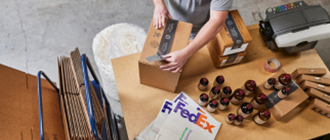
Import-Export 101: Your Guide To Starting An Import-Export Company
Starting an import-export company? We share the lowdown on registering your business, securing suppliers, and sourcing a reliable logistics provider.
Read More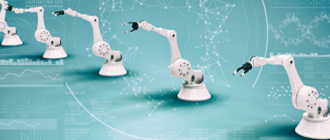
Why AI Sorting Robots Are Now Here To Stay
As e-commerce explodes, logistics is turning to tech, big data and automation to meet demand, meaning intelligent, AI-powered sorting robots are here.
Read More